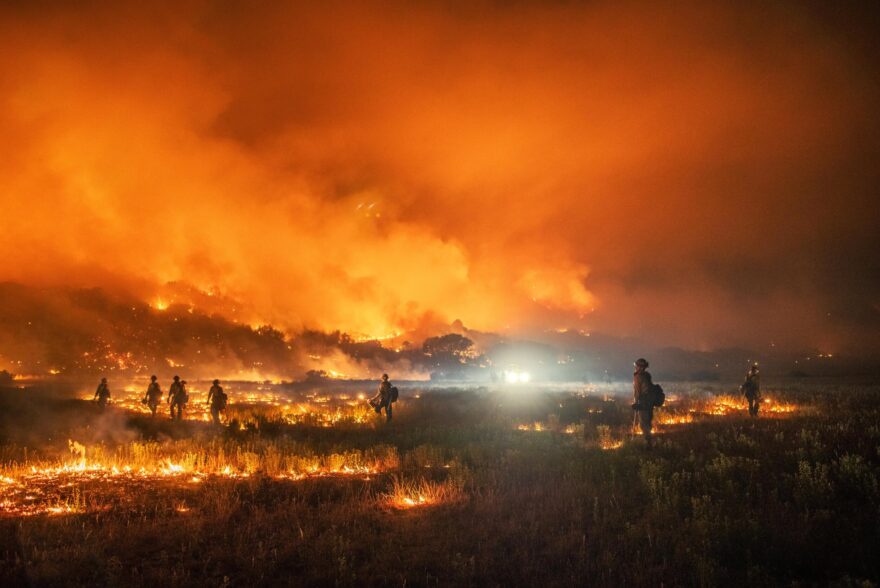Forester’s Notes: Wildfire Season 2020


Forester’s Notes: Wildfire Season 2020
It has become common over the past few years to follow our fire seasons with a spirited debate over whether forest mis-management or a changing climate might be blamed for the negative impacts of catastrophic wildfires.
Written by: Peter Wyrsch
Over the past few weeks, I’ve had one tab open consistently in my browser just for running the numbers. Acres to hectares. Hectares to square miles. Square miles back to acres. In forestry school, we were made to memorize a number of “Foresters Constants,” including easy tricks for calculating the basal area of a tree using only its diameter (0.005454 multiplied by the diameter squared) and committing to memory the number of square feet in an acre (43,560). I even heard of a recent graduate who had both of these figures tattooed on his forearm, to prevent his forgetting. I imagine that even he is having some trouble keeping this season’s wildfire numbers straight.
In the past month, the states of Colorado and California experienced the largest single wildfires in their recorded histories. In Oregon, the Beachie Creek, Lionshead, and Riverside Fires have burned over half a million acres combined in the mountains east of Salem. The Pearl Hill Fire in Washington state has consumed nearly a quarter of a million acres. These fires and others across the West have burned through forestland and into rural communities, uprooting thousands. The smoke they produce has darkened the skies in major cities across the West and can be seen from as far away as Europe.
It has become common over the past few years to follow our fire seasons with a spirited debate over whether forest mis-management or a changing climate might be blamed for the negative impacts of catastrophic wildfires. Policies advanced in the name of solving these problems, however, often cast climate change mitigation and improved forest management as mutually exclusive solutions. Such thinking has stalled productive conversation and led to inaction, despite near uniform consensus by fire scientists about how to prevent catastrophic megafires.
Forcing a false choice between solutions addressing either forest management or climate change is like asking a hospital administrator to choose whether to fund either the emergency room or the public health clinic. A healthy community needs both institutions to function well together and mutually inform one another. In turn, our forests deserve active, adaptive management that incorporates elements of both ecological forestry and resilience to a changing climate.
Blue Forest doesn’t plan projects of its own. Instead, we have the privilege of supporting our partners with the funding and financial tools they need to help them manage public & private lands effectively. To that end, we support both climate change mitigation and improved forest management activities that sustainably support the and in a way that provides for long-term ecological health and economic viability of our forests. We are proud of our work. As the fire season continues, we will be releasing regular updates to our list of community wildfire resources. Please feel free to reach out if you would like to share your thoughts or if you have any suggestions for us.